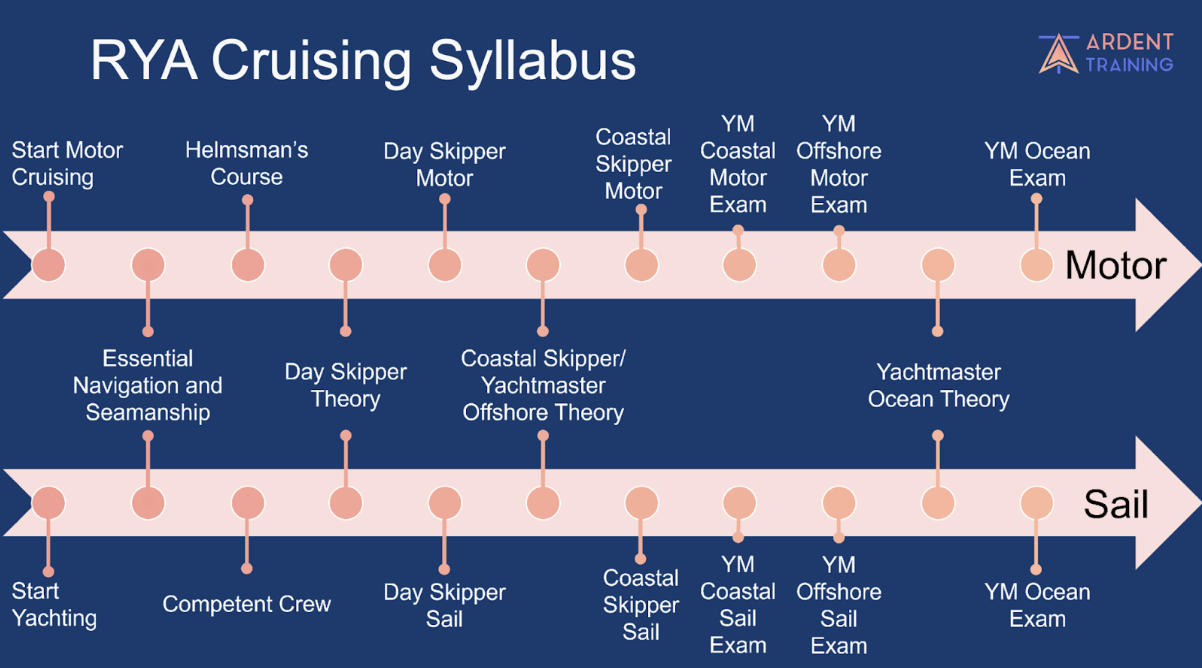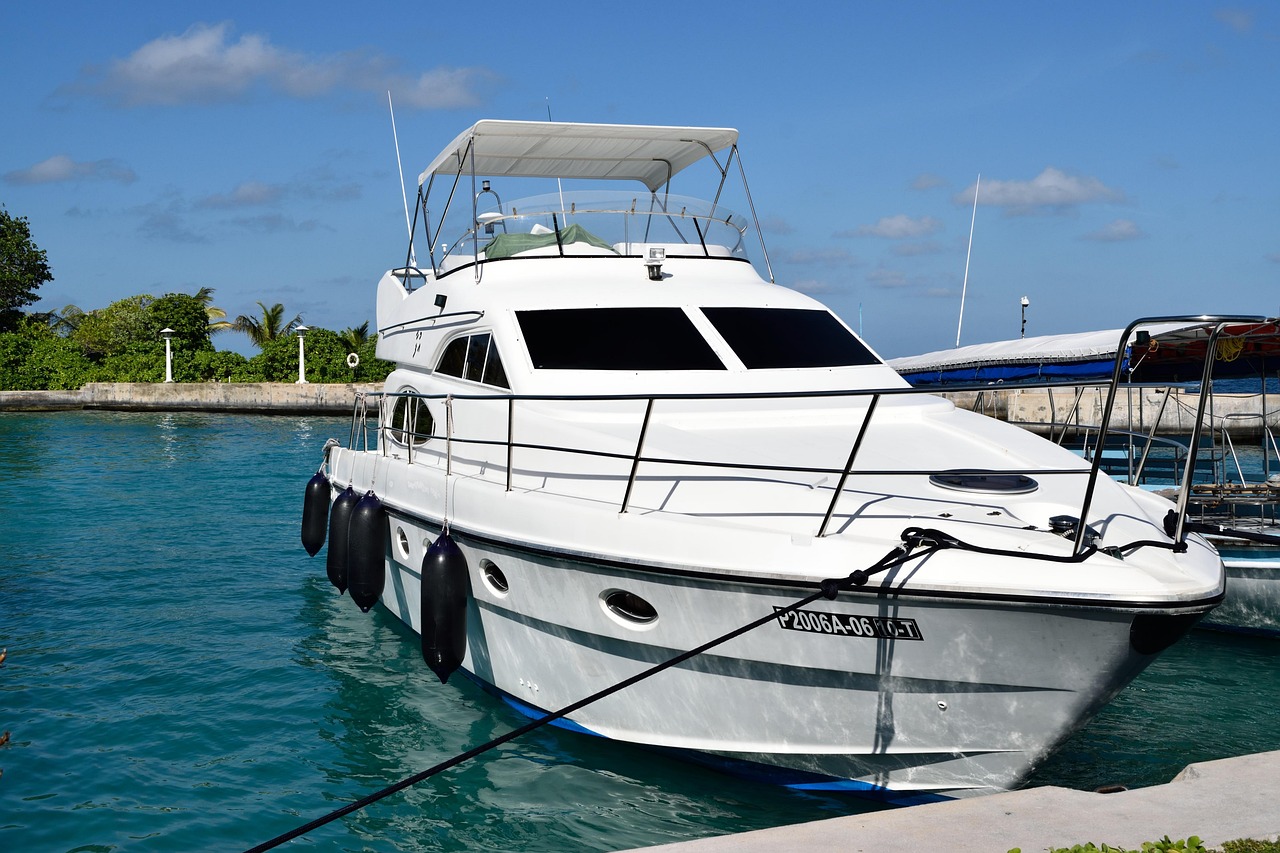
The Ultimate Guide For Avoiding Seasickness – Including Top 10 Tips and Top 6 Products – A Must Read For RYA Day Skippers and Yachtmasters
Sea sickness is miserable and a sure way to ruin an adventure at sea. But you don’t have to suffer, if you are well prepared you can significantly reduce your chances of succumbing. Below, we’ve included 10 top tips for avoiding sea sickness, and we discuss 5 types of products on the market and their effectiveness. This is essential information before going on your first RYA Day Skipper course.
The instructors at Ardent Training have seen it all when it comes to sea sickness. We’ve sailed in the world’s roughest oceans and seen the worst conditions one could ever hope to be involved with. We’ve sailed with thousands of people from total novices to salty professionals and famous racing sailors, and have built up a good idea of what works and what doesn’t.
It’s obvious that lots of new sailors get so anxious about sea sickness that they are doomed before they even step aboard. Of course, telling someone not to worry doesn’t help much, so we have put a whole string of more active advice together! But first, let’s tackle the big question:
What Causes Sea Sickness?
Our balance mechanism is built up of three components: our eyes, inner ears, and muscles and joints. All of these components pass messages to the brain which deciphers the information and responds with instructions to the muscles to maintain balance and coordination. Sea sickness occurs when these messages are not in agreement.
Our eyes play a fairly obvious role in our balance. We see our orientation, positioning, and the environment around us, and know from experience what effect it will have on us.
Our inner ears are full of tiny hairs which sense the orientation of our head. They can detect a variety of movements such as nodding, rotating, forwards/backwards, up/down, and can also sense gravity.
Our muscles and joints provide movement information and information on their relative positions.
The issue comes when, after a lifetime of working well together, these signals suddenly don’t agree anymore. Inside a boat, our inner ears will detect the motion of the boat and our muscles will be working hard to stop us from falling over, but our eyes will see a steady cabin and no perceptible signs of motion. This stresses out our brain which may respond with a wave of hormones causing nausea, vertigo and vomiting.
This all sounds complicated but the key is that our brain gets stressed by conflicting messages. If we can keep the messages concurrent or stop ourselves from getting stressed about the conflicting messages, we can avoid the mal de mer.
How To Avoid, Prevent or Cure Sea Sickness – Top 10 Tips
These tips are based on ways you can improve your mindset and surroundings to make yourself as well prepared as possible. Most of them focus on reducing anxiety, and making sure your body has the energy it needs to cope with the unfamiliar change in environment. They might seem intuitive, but it’s amazing how many folk lose the ability to look after their most basic needs before symptoms even start to take hold. Once the face turns grey and lips turn blue, it’s man down and we see the spiral that’s difficult to recover from. But, with this advice, you can catch sea sickness at its earliest signs (usually a slight headache and sudden tiredness) and you can reverse those symptoms and take the day back for yourself. It’s a battle that CAN be won, and knowing that is the first step to victory.
Take Sea Sickness Tablets
Ok, this one is medicine based but we may as well start here. Easy, buy some at the supermarket, read the instructions and hey presto. This should help a lot, both for preventing nausea and reducing anxiety. Where many folk go wrong though, is the ‘read the instructions’ part! Most are designed to be taken before you go to sea, not after you are already sick. Better yet, they are strong drugs so wean yourself onto them a couple of days before if you can. Take a quarter dose 2 days before, half dose 1 day before and a full dose with breakfast on the day. This way there will be no shocks to the system and you have the best chance of enjoying your day out on the water. If you have no reason to expect that sea sickness will affect you then it will probably be easier to forgo the side effects which are usually fatigue and drowsiness and just focus on the other tips here instead.
Set Up Your Sleeping / Cabin Arrangements Straight Away and Unpack
This makes people feel more in control of their situation and helps one to settle in and relax. Remember, calm and comfortable is what we are aiming for!
When You’re Not Busy, Avoid Going Below Decks and Stay Outside as Much as Possible
If sea sickness is believed to be caused by conflicting messages from your eyes and your balance mechanisms, this can be combated by staying outside. Outside, we see the horizon, we see the waves, and we feel the corresponding motion. Everything makes sense and balance comes naturally. Inside the boat, everything looks straight and steady as we have no horizontal reference point, but our other senses are telling us we are moving. Our body gets confused and if we are not used to it, we may feel sick. Being outside is best where the wind in your hair and the salty air up your nose will keep you straight, as will looking at the horizon.
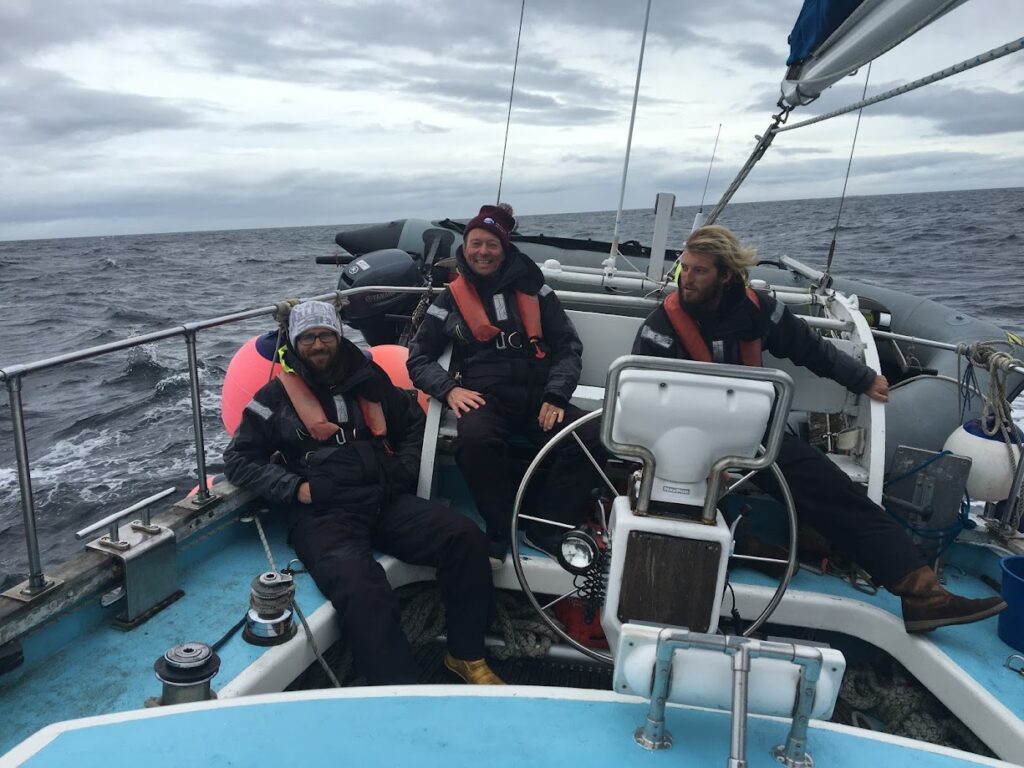
Have A Handy Grab Bag
Packing a water bottle and flask is a good idea, so you don’t have to go inside for drinks so often. Just make sure they are topped up before you leave and that you have ready to eat snacks at hand. In this bag it’s also a good idea to keep your woolly hat and gloves, lip salve and any other little bits you might want close at hand. Small dry bags are easy and inexpensive to come by now, and they can be clipped to a guardrail to keep your belongings out of anybody’s way, and it stops your possessions sliding around, getting wet or going overboard.
Learn To Use the Toilet Before You Leave the Harbour
By doing this, it means you can figure out how the flush works (boat toilets almost always have a different flushing system to land toilets), and it means that you can hopefully avoid the annoyance and balancing act of taking your lifejacket and half your clothes off in order to use the toilets at sea. This ticks off keeping ourselves comfortable and not needing to go inside unnecessarily.
Hydration and Food
Drink plenty of water and eat plenty of food. Dehydration and low energy levels will make you weak and sick regardless so don’t blame it on the motion of the boat. Being outdoors, exposed to the weather, and our bodies resisting the rocking and rolling will burn more calories than usual. It’s good to counteract this with a full stomach which is more stable than an empty one, and keeping your sugar levels high helps you stay energetic. Crisps, sandwiches, oatcakes, fruit and chocolate bars are all good snacks and so is anything that is ready-prepared.
Keep Busy
Take the helm! Steering is actually one of the best remedies for that dizzy feeling. You’ll have no choice but to focus on the horizon, and having your body aligned straight on with the boat and your eyes watching the approaching waves will help your inner ear sort out any confusion it’s having with balance! Standing up tall will help you get plenty of oxygen into your lungs and the activity of turning the wheel will keep your mind engaged and your body warm. Don’t be afraid to ask if you can drive, many skippers are glad to hand over the controls once out in the open sea and it’s not too tricky to learn.
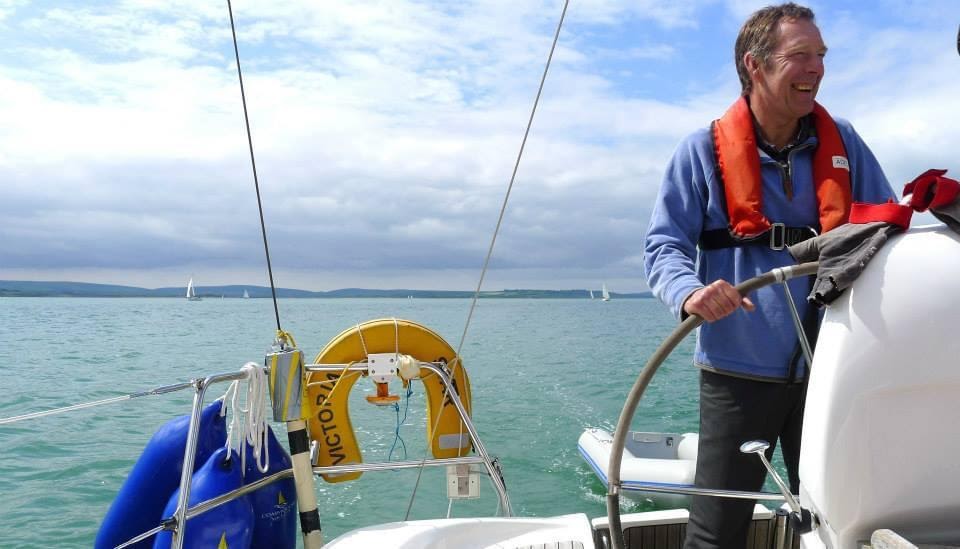
Layering
We’ve mentioned that it’s best to stay outside where possible, and if we’re outside in the wind then we’ll need warm layers. Lots of thin layers are far more insulating than just one or two thick ones, and they give much greater control over temperature. Remember, comfort is key! Well, once you’ve got a lifejacket on top, it’s easy to get lazy and suffer from being too hot or too cold for not wanting to swap out your layers. Don’t be this person! If you get hot, shed a layer, if you get cold, put another on. Sitting there huddled whilst clammy or shivering won’t be comfortable, so have some self-discipline and do something about it. Get a friend to help with the lifejacket if it is difficult to take on and off.
Rest
Seasickness can cause tiredness and tiredness can cause sea sickness. So, if you feel like you need it, and whenever the opportunity is available, you should rest. It’s amazing how after just a 20-minute nap, early signs of sea sickness including headache or dizziness can be erased. Shutting your eyes will also eliminate those mixed messages between your sight and balance mechanisms so don’t be afraid to have a bit of shut-eye inside.
Make the First Day of the Trip a Short One
If you are planning a multi-day trip then this is essential. Chances are the journey to the boat and the excitement of arriving was all quite tiring. It’s also often the case that a few hours is needed just to familiarise oneself with the motion of the boat. Sometimes a person can be totally fine with one boat but then suffer on another. Once back on land though, the body recovers from sea sickness in just minutes and benefits from a ‘reset’. After this reset, a great proportion of sea sickness sufferers are totally fine on the second outing! If somebody is suffering particularly badly on day one, and you have the chance to stop for lunch and get the person to dry land to recover with some food and drink, then again, this ‘reset’ method can work a charm.
Get Trained – Can Getting Your RYA Qualifications Really Help?
Knowledge is power. Having a good understanding of your surroundings will do a great deal to your confidence. Learning about the tides, the weather, the stability of the boat and its limitations and what to do in all cases of emergency will greatly add to your sense of well being whilst aboard any vessel. This, in turn, will reduce the likelihood of getting seasick in the first place. So if you have dreams of being a capable crew member or captaining your own boat one day, there’s no reason not to start your training sooner rather than later.
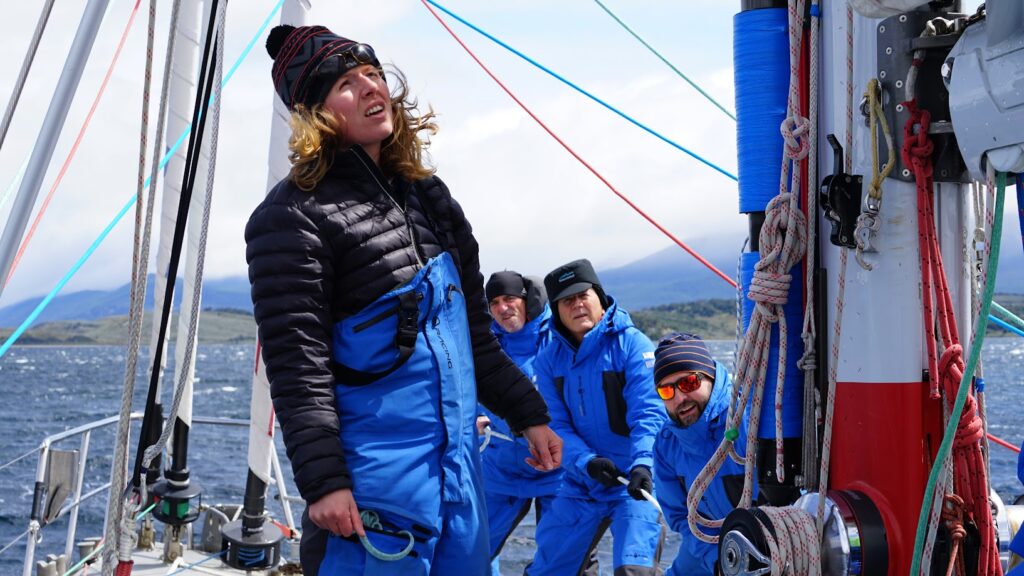
Products on the Market
For some people, simply the act of purchasing something will make them feel more prepared and in control – like a placebo. But if that’s what works, hey it’s no bad thing!
We’ll show you some of the best performers based on reviews. Some are natural, herbal, or holistic and others are over the counter medicines.
Wristbands
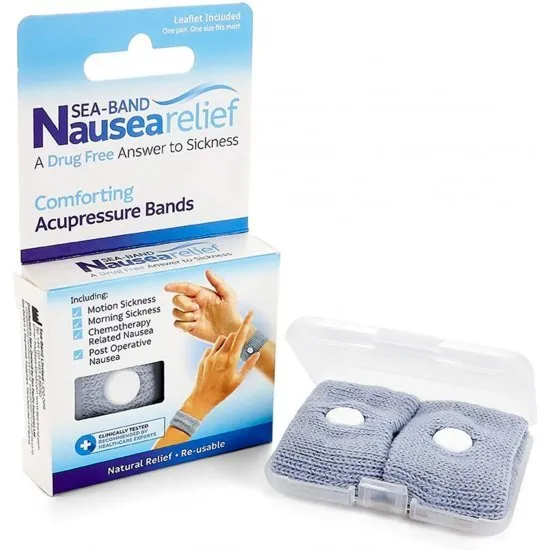
These wristbands have been around for decades. Based on acupuncture methods, these wristbands simply have a plastic bead that you position over the vein on your wrists. The elasticity in the wristband means that gentle pressure is applied. They are super cheap, at less than £2 on most online retailers or at most chemists and there are many folks out there who swear by them. At this price, it’s probably worth giving them a go?
Glasses/Goggles
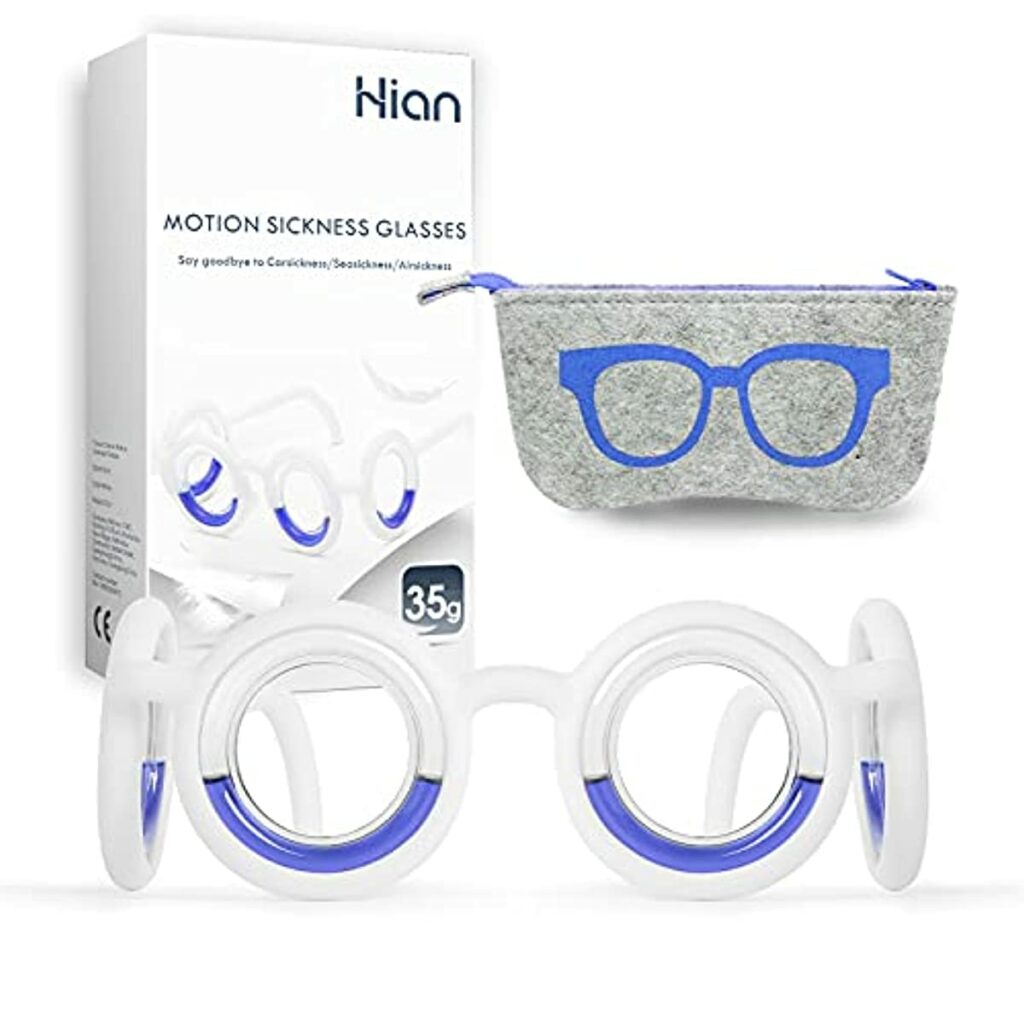
These goggles certainly look odd, and whilst I’ve met people who have packed them in their bags, I don’t think I’ve known anyone to wear them for long enough to find out if they work.
There are no lenses (not even clear ones) and the rims contain floating blue liquid which aims to recreate the horizon even when you can’t see it.
58% of reviews on amazon are 5* and it has a 4* rating overall, so there are plenty of people out there who vouch for them! The other half tend to say that the product quality is bad and so they didn’t wear them long enough to find out if they worked.
Patches
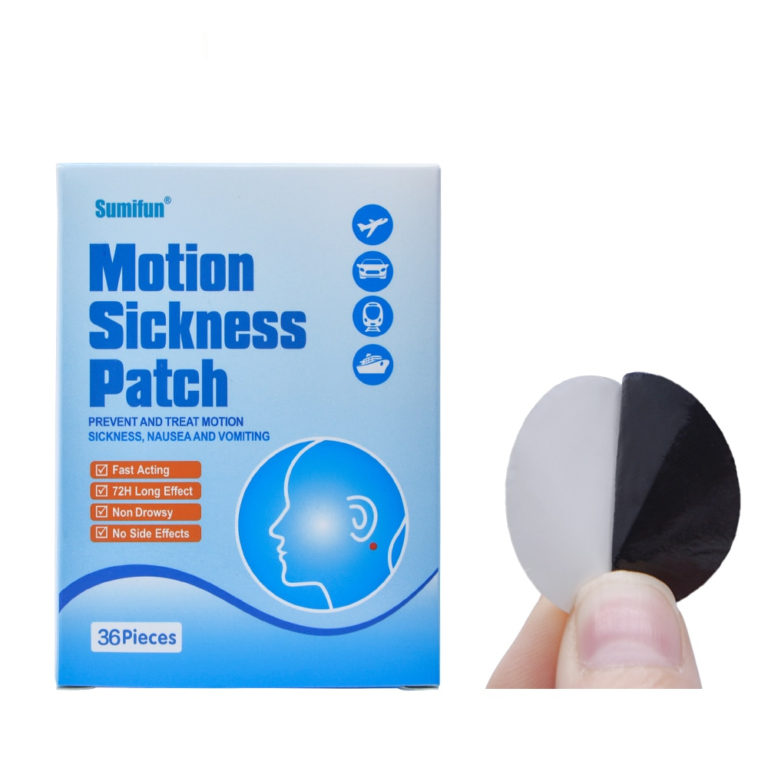
These patches are about the size of a large button and are usually worn behind the ear which is nicely discreet.
Be aware though that a patch is just the method of the medicine entering your body. The ingredients can differ from all natural herbal remedies that you can buy online to prescription medicines like scopolamine. So, not all patches are equal, be sure to check the ingredients when you purchase and get the right patch for you!
Sea Sickness Tablets
Medicines like Kwells and Stugeron can be purchased from your local pharmacy and even some supermarkets. Different brands have different active ingredients which target motion sickness from different angles. Some aim to reduce anxiety whilst others block the senses linking your inner ear to your brain. They also have different doses and side effects, so be sure to chat with your pharmacist to find the best fit for you. Here are two of the more popular brands:
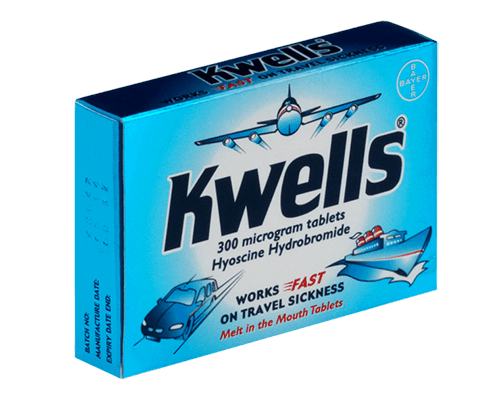
Kwells 300 microgram travel sickness tablets are used for the fast and effective prevention and control of travel sickness. Travel sickness happens when the brain receives mixed messages. Visual messages from the eyes inform the brain that the immediate surroundings are stationary, but a delicate balancing organ in the ear tells the brain that you are moving. This conflicting information triggers the nausea we associate with travel sickness.
The active substance in Kwells travel sickness tablets is hyoscine hydrobromide. Hyoscine hydrobromide temporarily reduces the effect of movement on the balance organs of the inner ear and the nerves responsible for nausea.
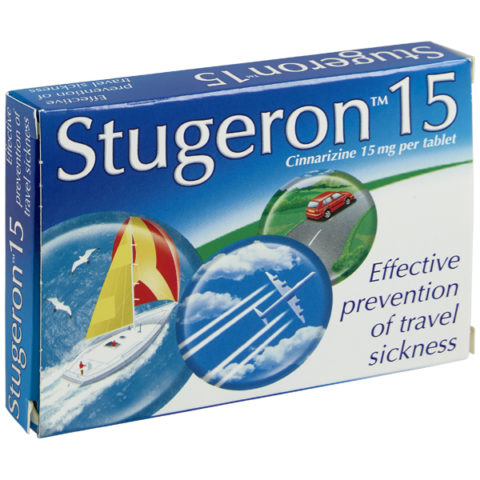
Stugeron sea sickness tablets contain 15 mg of the active ingredient cinnarizine. This is an antihistamine that stops nerve signals from triggering the vomiting centre in the brain. These signals are sent by the vestibular apparatus at the inner ear, and preventing them from reaching the brain suppresses symptoms of travel sickness.
The vestibular apparatus is sending the brain information on the body’s position. When the head is moving a lot, such as when travelling by car or plane, these signals can trigger the vomiting centre in the brain. This causes symptoms such as nausea, dizziness, vertigo, or vomiting.
Ginger

Ginger has been an age-old cure and prevention method for sea sickness since ancient times.
It can be purchased in many forms: raw, tablets, candies, dried, teas and even ginger biscuits, and the best available evidence demonstrates that ginger is an effective and inexpensive treatment for nausea and vomiting. It’s cheap and easy to try and many swear by it so why not give it a go.
Electric Wristbands

This technology claims to treat any and all types of nausea. It seems to be the most popular digital device around and comes with a hefty price tag of approximately £95. When switched on and worn correctly it creates a tingling sensation through your middle finger. Little else is said in the promotional material about how this product actually works, but there are hundreds upon hundreds of positive testimonials about how it has changed their lives for the better. If the level of satisfaction matches the price tag then it must be very good indeed but let’s not forget that the cheaper solutions also came with hundreds of positive reviews too!
Conclusion
The most important thing is not to worry. As said right at the beginning of this blog, getting stressed about sea sickness often causes sea sickness!! Even if you do start to feel a little nauseous, don’t feel embarrassed or ashamed, try checking off the self-help points at the start of the blog to see if you can reverse the symptoms and if you find something that works for you, stick with it. It doesn’t have to be a downward spiral. On the other hand, if you want to actively do something to prepare yourself before the trip begins, you could look at purchasing a sea sickness remedy.
We can’t recommend which remedy you should try first as every cure on this list has worked for millions of people and failed for millions of people. Some are more scientific in their method, and others would fall under the ‘alternative medicine’ banner, so pick the one that you feel most confident in, be proactive, and give it a good go.
Like we’ve said throughout this blog, getting yourself comfortable and calm is the best way of warding the green gills away. Ultimately, having a good knowledge of the weather, the sea, and the stability of your boat is the best way to go about this and a great way to start is by taking a sailing course.
Check out our RYA Day Skipper theory online course on www.ardent-training.com which is suitable for beginners or competent crew members who want to up their knowledge and skills to the levels of a skipper.
We do not receive any kind of financial incentive for the products featured in this blog.

